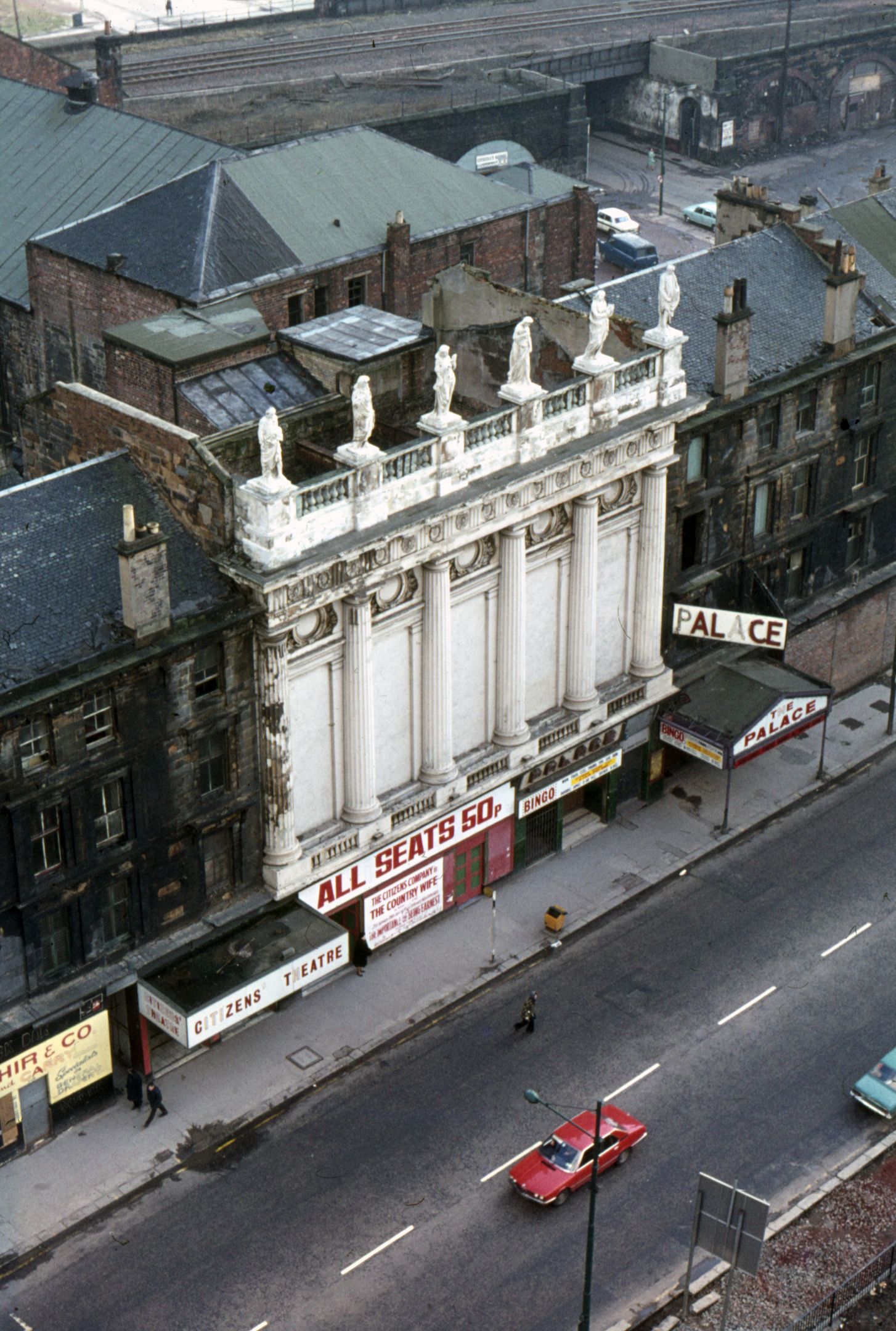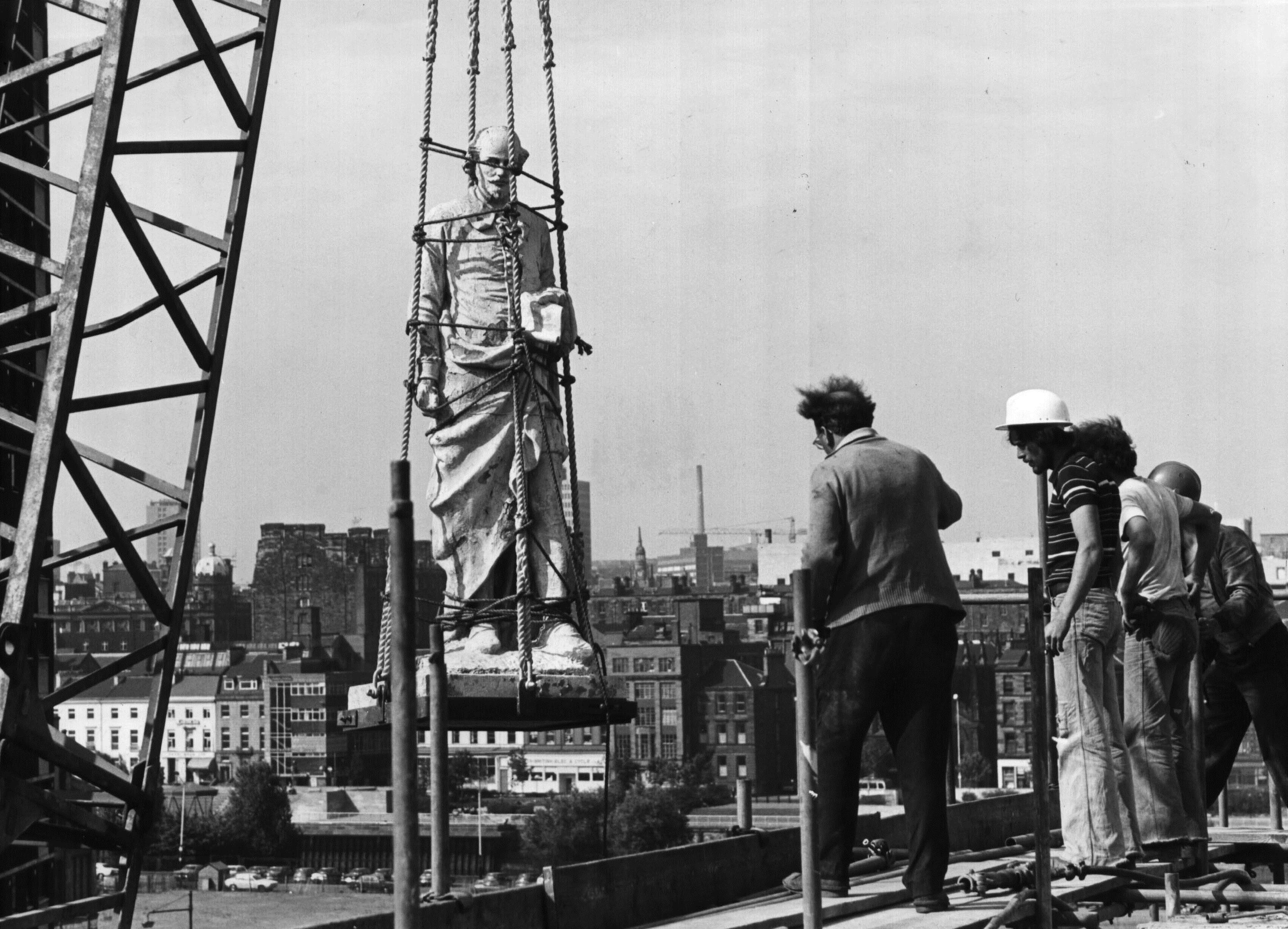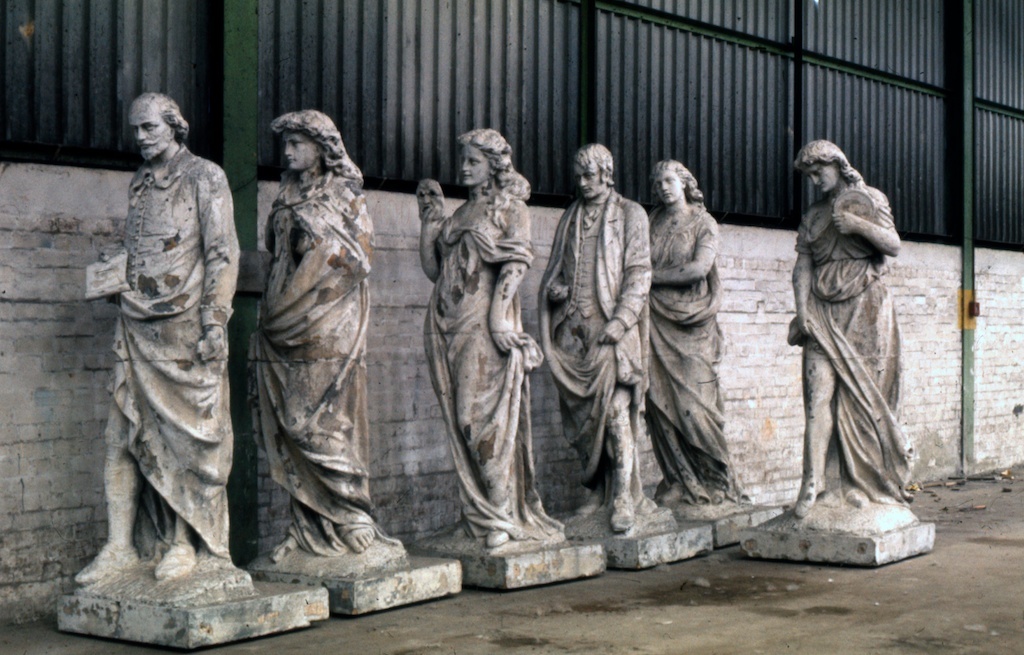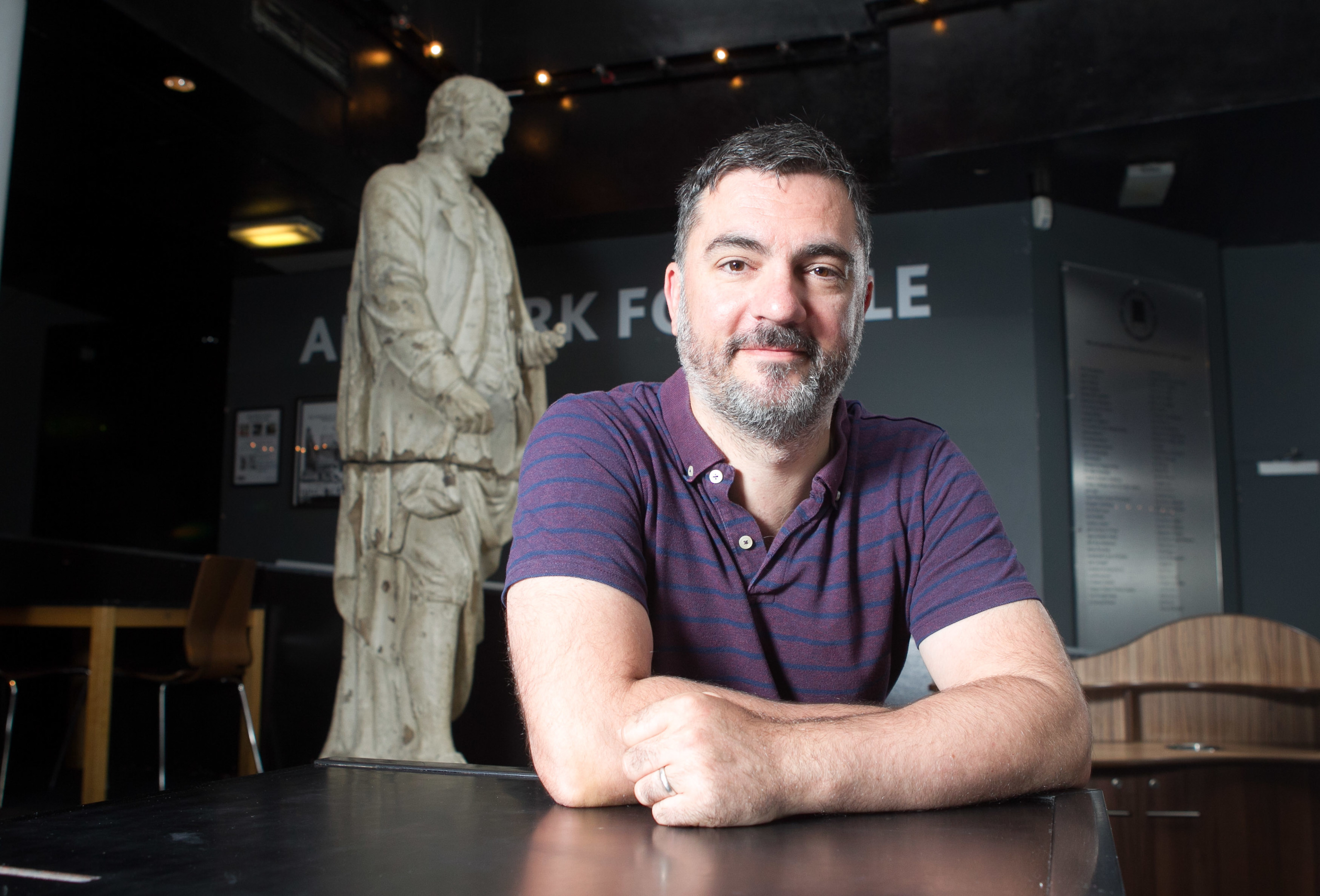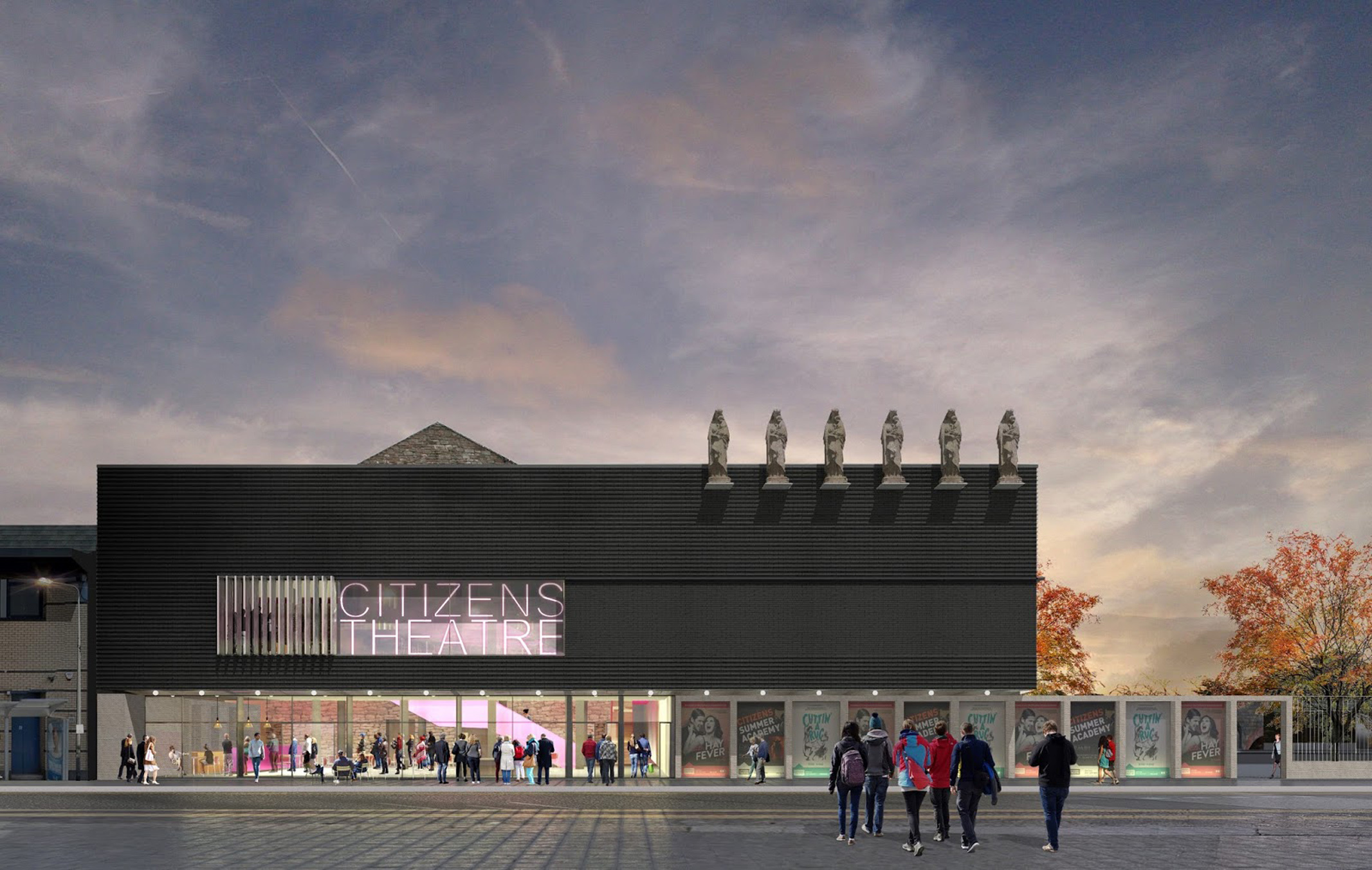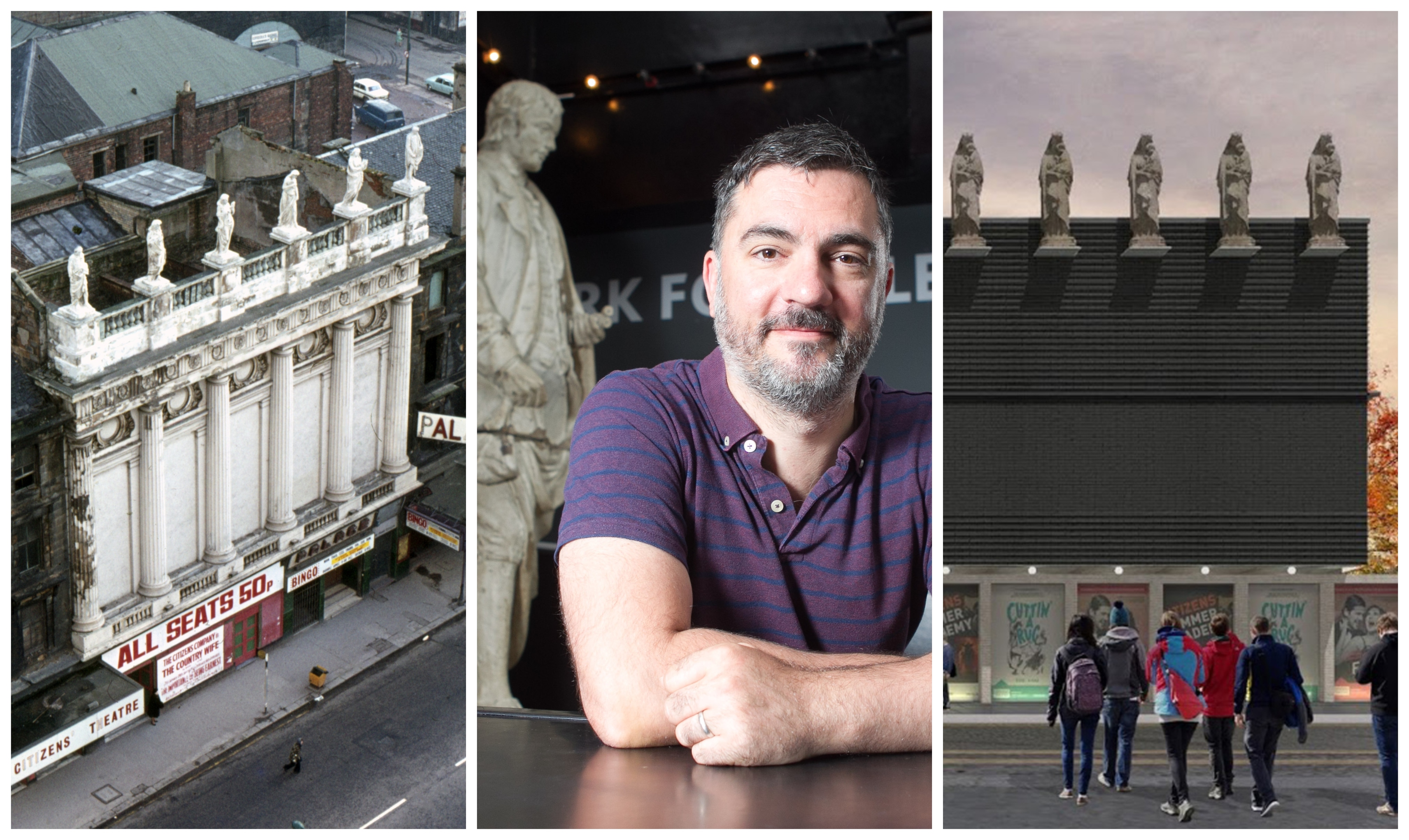
THE nine Muses have inspired artists since the days of Ancient Greece – and four of them watched over Scotland’s biggest city for generations.
Now the statues that stood above the famous Citizens Theatre in Glasgow are to return to their rightful place.
Euterpe, Thalia, Melpomene and Terpischore – not names typically found in the Gorbals – along with William Shakespeare and Robert Burns stood, silhouetted above the theatre, in a neighbourhood then branded one of Europe’s worst slums.
With the tenements flattened and the area’s regeneration continuing, they will return to their rightful places on the skyline after decades indoors in the theatre’s foyer.
Better known as the muses of music, comedy, tragedy and dance, the four white statues will join Shakespeare and Burns on the front of the Citizens Theatre as part of a near-£20 million redevelopment.
Later this month, the Citizens will close its doors for two years in order to preserve the Victorian interior and upgrade its other spaces.
It will be the first time in its 140-year history that a working theatre has not been operating at 119 Gorbals Street.
“The statues will end up in almost the same place as they originally were – it’s a nod to history,” said Graham Sutherland, the Citizens’ head of production.
The six statues, said to weigh three tons each and the work of Glasgow sculptor John Mossman, stood on large columns taken from the Union Bank and were part of a shared frontage with the adjoining Palace Theatre.
“There was a fire in the Palace in 1975 and it nearly burned down,” said Graham.
“A lot of the façade became unstable and an order was given for its demolition, with very little notice.
“The Citizens staff managed to rescue the statues.”
It is the second-oldest operational theatre in the UK – the Leeds Grand preceded it by six weeks – and it opened as Her Majesty’s Theatre in 1878.
It wasn’t a success and went bankrupt, although not before a riot was said to have ensued after a performing elephant panicked on stage.
It soon reopened as the Royal Princess’s Theatre.
Graham said: “I believe it started as a venue for light opera, but found its feet in variety and pantomimes, which used to run for months. When the theatre first opened it had a capacity of 2,500. We’re now down to 500, as fire corridors and safety measures have been added.
“An usher used to let people in to the upper circle until he saw the beam bend a certain amount and then he knew he couldn’t let anymore in. It would be absolutely crammed.”
It was renamed the Citizens in 1945, two years after famous playwright James Bridie formed The Citizens Theatre Company.
The Citizens officially opened on September 11, 1945, with a production of JB Priestley’s Johnson Over Jordan.
Over the years, a who’s who of talent has graced the famously sloped stage on their way to stardom – names like Pierce Brosnan, Rupert Everett, Helen Baxendale, Alan Rickman, Mark Rylance, Gary Oldman and Celia Imrie.
“When taxi drivers find out what I do, they’ll ask who we have in the Citizens this week and I say they won’t have heard of them – but they will in 10 years’ time.”
As Citizens Theatre productions move temporarily to the nearby Tramway, the building will be transformed.
“The heart of the theatre is the part we all want to keep and we’re trying not to change too much of that.
“We’re highly conscious we’ve never been off site, so we hope the audiences come with us on the journey.”
The Citizens staff also want to make sure it remains a theatre for everyone, with its links with the local community and 50p ticket offers at its heart.
Before the doors temporary close, they will be thrown open one more time on Saturday, June 23, for the On The Move event.
Visitors can take a backstage tour and buy a memento from the sale of costumes and props used throughout the years.
Graham added: “It doesn’t matter if you are David Hayman or are just out of college, you will be treated the same here – and that’s the magic of the Citz.”

Enjoy the convenience of having The Sunday Post delivered as a digital ePaper straight to your smartphone, tablet or computer.
Subscribe for only £5.49 a month and enjoy all the benefits of the printed paper as a digital replica.
Subscribe